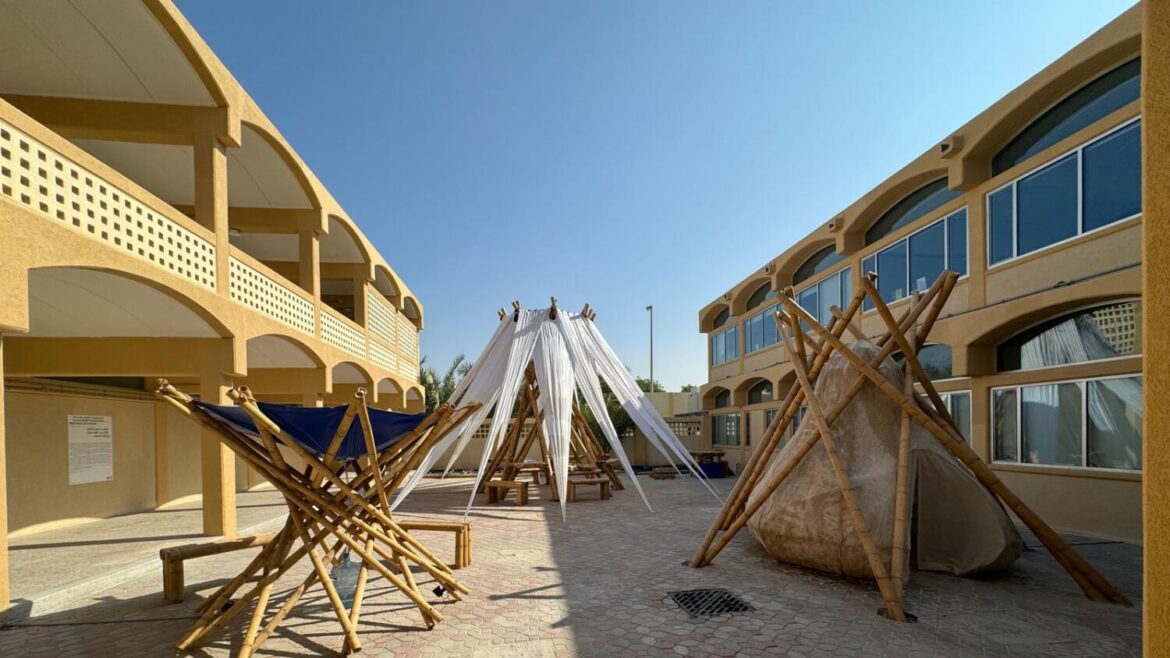Structures made of repurposed telephone poles, bamboo shoots and raw construction materials are part of an architecture exhibition that kicked off in Sharjah on Friday. The second edition of the Sharjah Architecture Triennial champions creativity, innovation and resourceful use of design solutions, with installations across four locations in the emirate.
Free to access and open to the public, the exhibition will also host workshops for children. “This exhibition will teach visitors a lot about their environment,” said Sheikha Hoor Bint Sultan Al Qassimi, President and Director of Sharjah Art Foundation, speaking to Khaleej Times on the sidelines of the event. “It will also teach them how to live in a way that is sustainable and at peace with the nature.”
Curated by Lagos-based architect Tosin Oshinowo, the triennial will feature 30 architects, designers and studios from 26 countries and will be displayed across the emirate till March 10, 2024.
From large-scale installations and exhibitions to critical conversations and wider public programming, the Triennial will examine how cultures of re-use, re-appropriation, collaboration and adaptation can help to deliver a more sustainable, resilient and equitable future.
Minimise waste
Seats and tables inside Al Qasimiyah School- one of the locations of the exhibition- have been made from bricks, sheets and other construction materials that were sourced from Sharjah Industrial Area. According to the curator, the exhibitors have been instructed to minimize waste by sourcing materials locally and creating exhibits that are reusable.
“We bought the materials from traders in the industrial area for using them in our installations,” said Tosin Oshinowo in her opening speech. “Once we are done using the materials, we will sell it back to them at a fraction of the cost. That is how we are hoping to minimise the waste produced by our exhibition.”
The Triennial was first established in 2018 to provide a platform for architecture and urbanism. Projects will be displayed across the city and its environs, from central locations such as the old Al Jubail Vegetable Market to the surrounding desert.
Sheikha Hoor revealed that several exhibitors had been approached by local companies for their creations. “We can’t give out names but many of those who have come here are being approached by local companies to put their creations into practice here,” she said. “It shows that the triennial is having a positive and practical impact on the city.”
Paying homage
At the opening of the event, Sheikha Hoor paid homage to her late twin brother. “He was a fashion designer but also studied architecture,” she said. “He was in charge of urban planning in Sharjah. It was important for him to look at architecture and design and how it could impact the building of our city. Since, I went to art school and had so much experience organizing biennial, it made complete sense for us to do this project together.”
However, just months before the event, her brother passed away. “He didn’t see the progress that was happening,” she said. “It is hard but I try to focus on my role and what my responsibilities are to continue doing the work he would have wanted to do.”
Look: Sharjah architecture exhibition features unique structures made of bamboo, waste material
213


